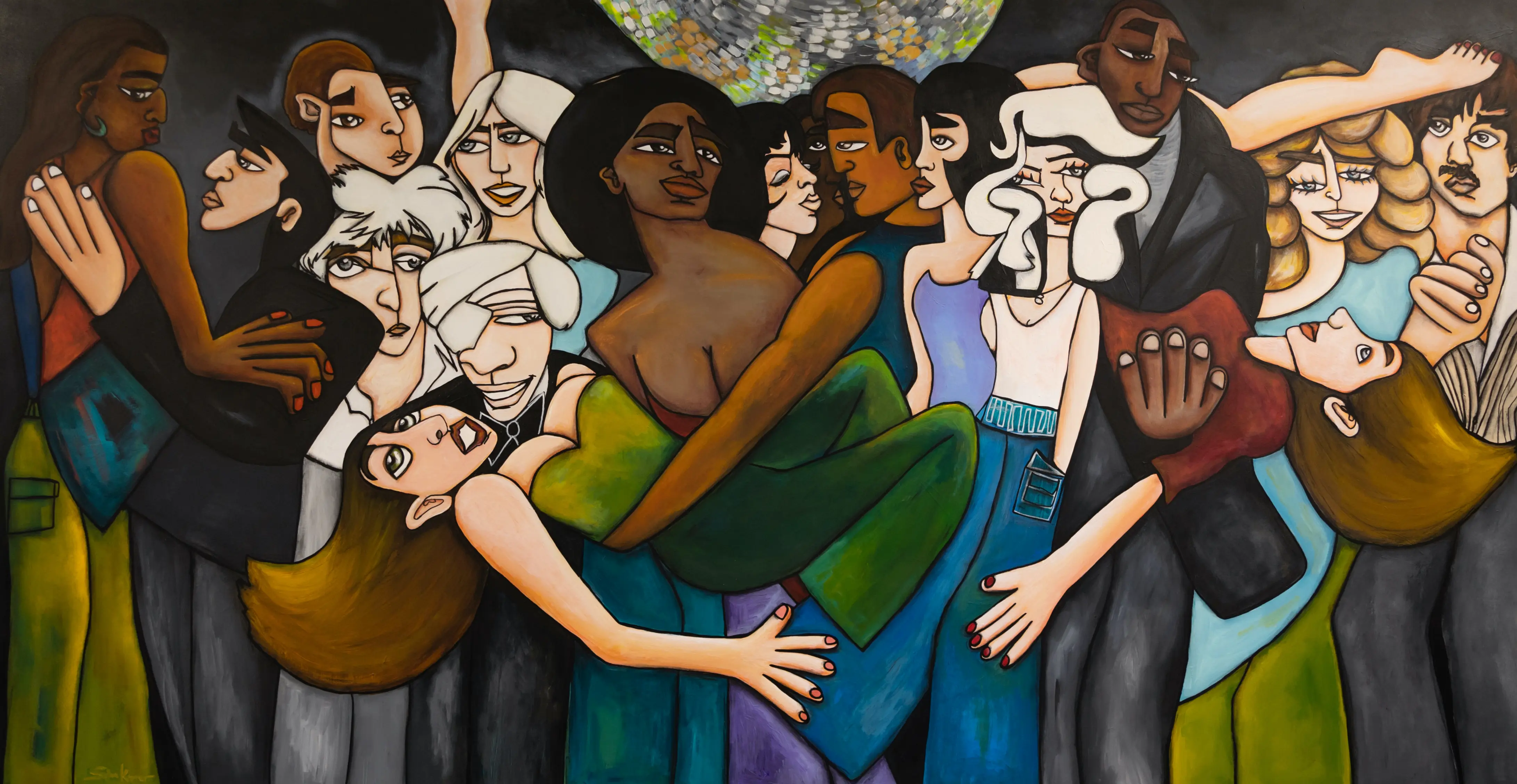
Written by S.S. Thompson
Photographs by Wesley Kemp
"Sometimes I’ll be in my studio and people will walk by and see me working, and literally wave and ask if they can come in and see my work,” laughs Sophie Kipner from the comfort of her home studio in Los Angeles. A welcoming presence, Sophie understandably only invites people she knows into her studio. “It is a special place, a safe place, from which I can work emotionally and intuitively. Someday I am sure I will expand to a different space, but the work will always be vulnerable, and I always aspire to create a world into which the viewer can feel invited” she explains. Nonetheless, the voyeur at Sophie’s window presents an interesting irony, given the style that launched her career. In recent years her unique form of artistry has gained her a wide array of patrons that include Jim Carrey, Courteney Cox, Dwayne “The Rock” Johnson, and Josh Brolin among others.
Sophie first came into her own as a visual artist with a unique style initially inspired by blind contour — an art class staple that involves drawing a subject without looking at the canvas nor picking up the pen. It all began at a dinner party Sophie threw years ago when she was living and working in London. At the time, she was working on a novel and found herself completely blocked creatively. Eager to break free – and heed her father’s advice about trying a different outlet (his being a songwriter himself validated his point) – Sophie decided to play a game with her guests. She grabbed her art supplies and had everyone draw one another in the blind contour technique. Through the laughter and lack of pressure to perform, Sophie discovered what she came to coin “Don’t Lift Up Don’t Look Down.” She credits the approach with freeing her and allowing her to be truly open. “We get in our heads so much about how things should be and how we want to be perceived. Imposter syndrome comes into play in that minute… if my brain gets too involved too early, I miss out on the pure joy of being purely creative,” she aptly surmises.

While her career as a visual artist may have launched off a fantastical twist of fate - almost unsurprising in the life of someone with such a bright, warm and magical energy herself - she always loved the visual arts. Sophie brought her arsenal of knowledge with her that coalesced into a career-defining moment, one that ultimately refined her calling. Sophie lights up when she discusses her process, and the way in which it allows her to stay present, as well as to explore different personalities. “When you’re painting like this, you have to be in the moment,” explains Sophie, who laughingly admits that boxing is the only other outlet that works equally effectively for her. A self-described introvert whom people perceive to be an extrovert given her warmth and charm, her work allows her to connect deeply to her subjects. “I love studying the energy of people” she explains. Her style, far from realistic is defined by gymnastics-like contortions of her subjects – the result of not looking at the page while doing the initial sketch. “I’m really just fascinated with people’s features, and I exaggerate things I love about them, and discover what best represents them,” she explains. Having constructed an outline, Sophie then masterfully captures the essence of her subjects when she develops the initial sketch through charcoal shading and her brilliant play with color.
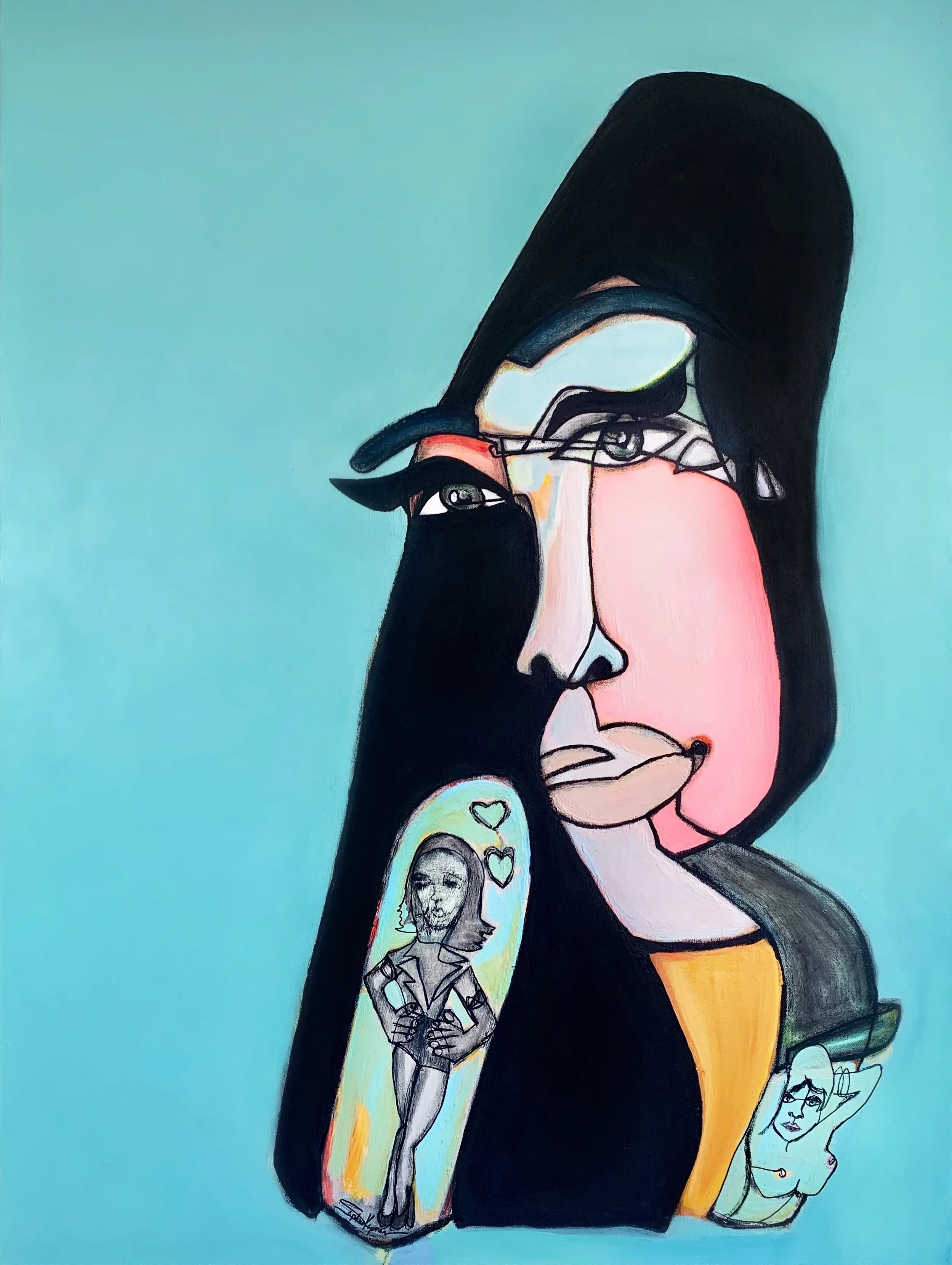
Amy Winehouse
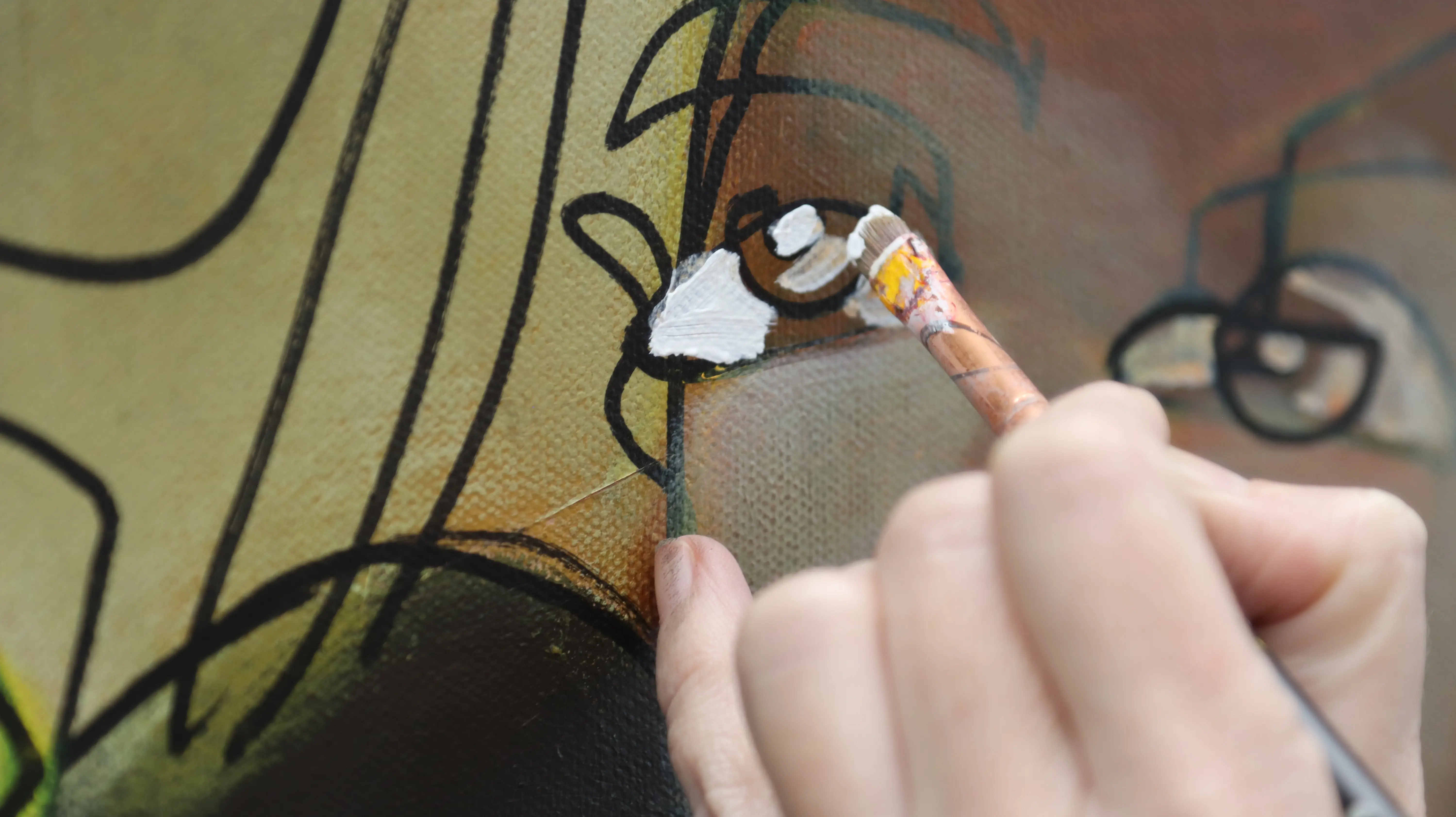
Sophie’s first solo show, in which she really made her mark, featured dynamic re-interpretations of icons such as Jimi Hendrix and Ruth Bader Ginsberg, to name a few. At a certain point during this creative chapter, she realized that the majority of the photographs that inspired her were all done by the same person, a man she had actually briefly encountered during her London days: the famous Rolling Stones photographer Baron Wolman. Always conscious of giving credit where credit is due, she reached Baron to request his permission. In a wonderfully auspicious turn of events, her open approach led to a joyful artistic collaboration that is featured in an Oscar short-listed documentary SOPHIE AND THE BARON (dir, Alex Jackson, prod, Courtney Cox and Joanna Natasegara), recently acquired by Disney. “If you follow joy, it can only lead to good things. My whole career based off an organic moment that I didn’t anticipate, bringing me joy, and I followed that,” Sophie bemusedly reflects.
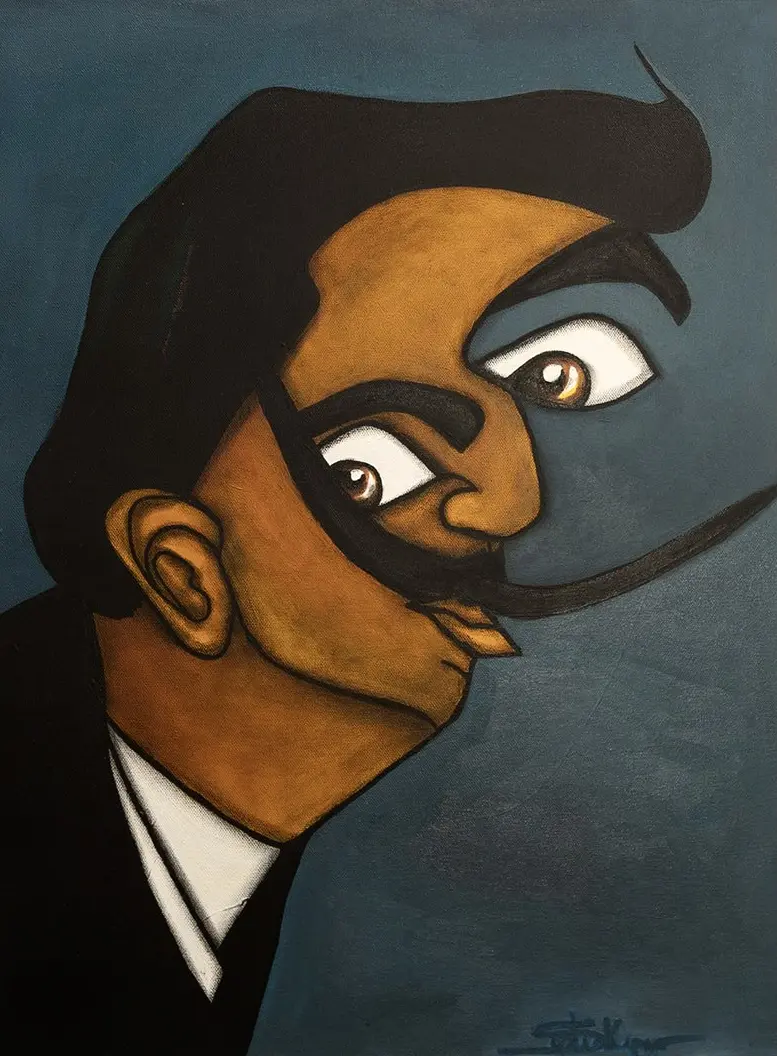
Dali
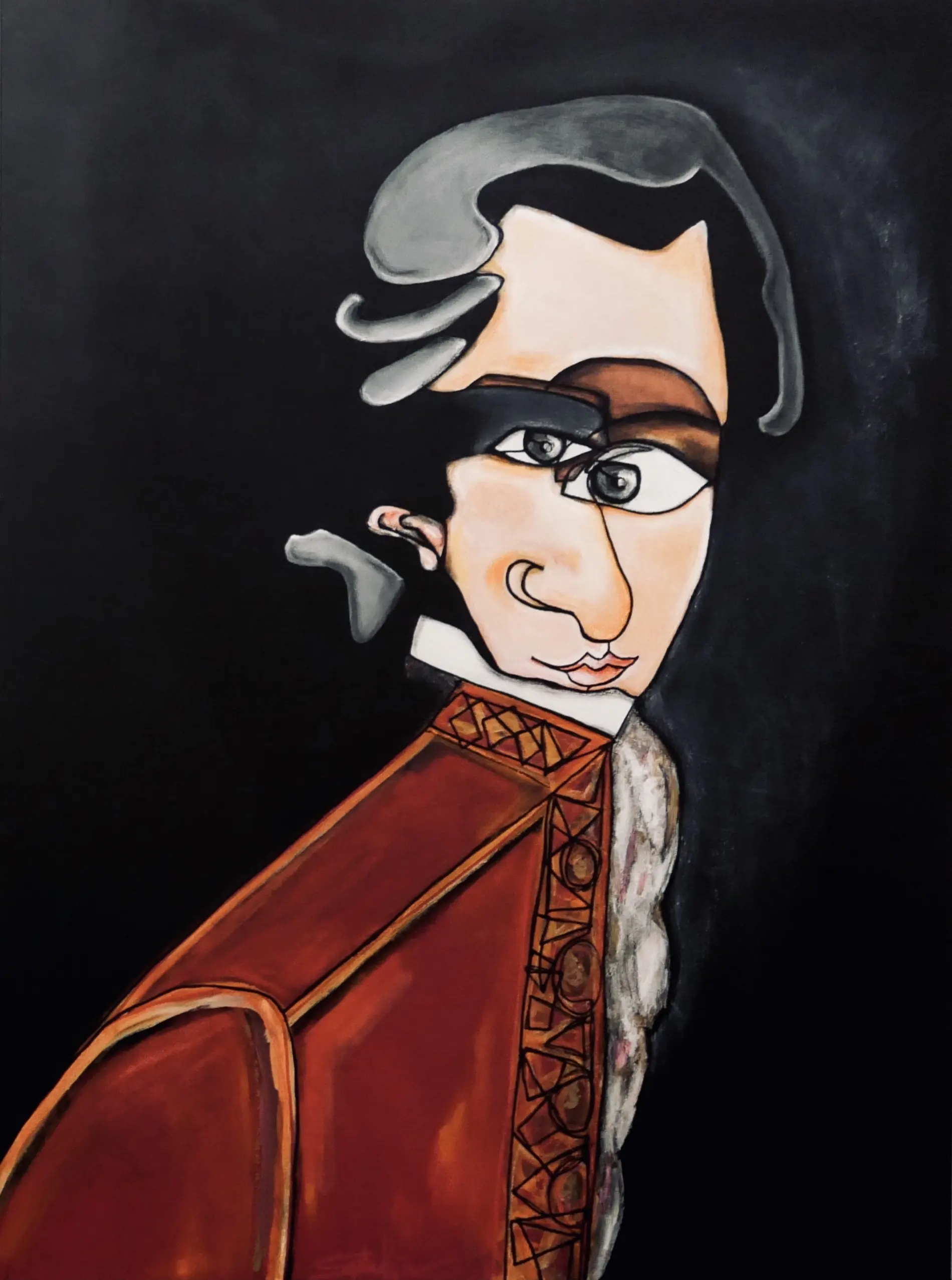
Mozart
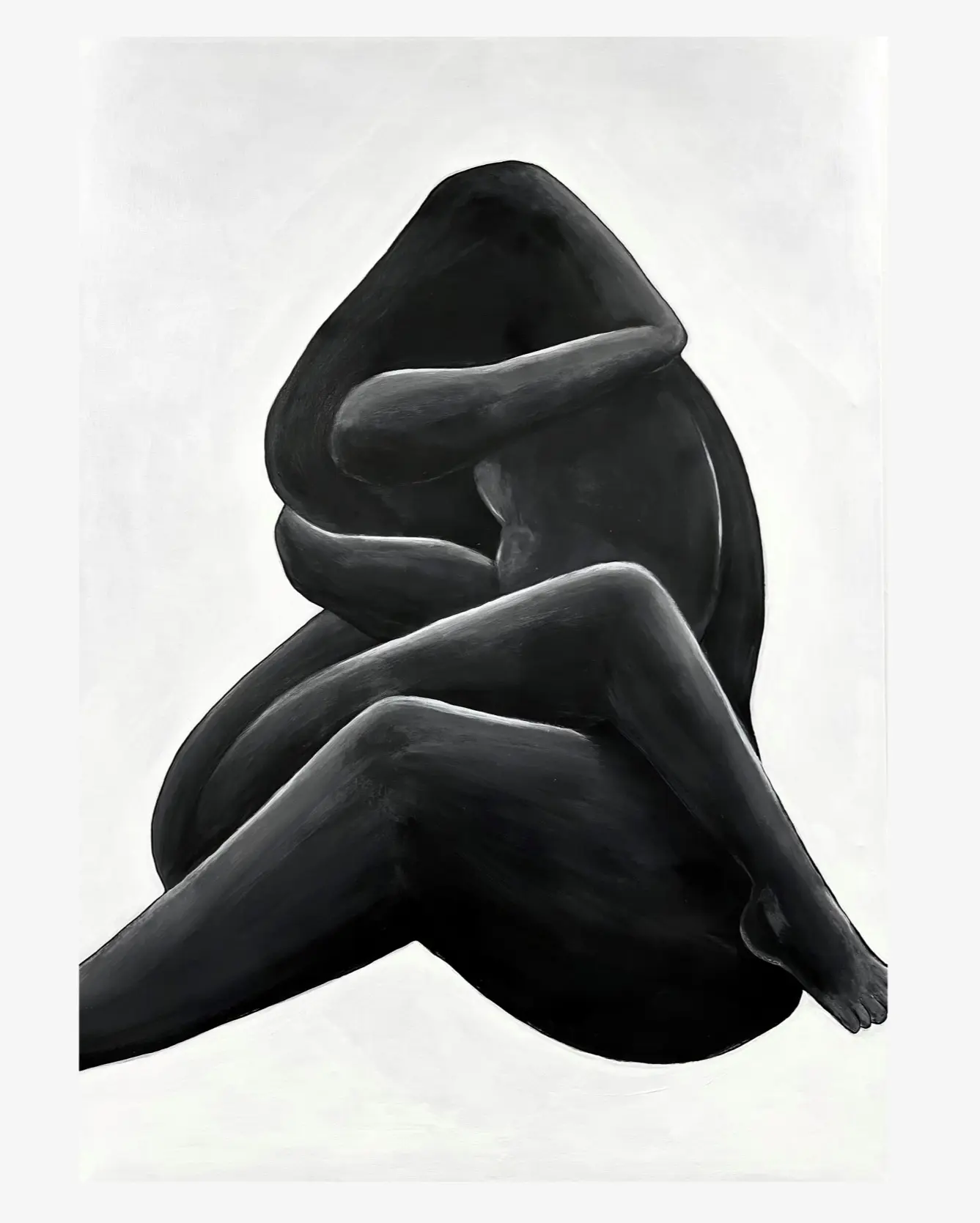
Twogether
While Sophie continues to work on commission for specific subjects, her style has expanded to incorporate more elements from a very active imagination. For her, drawing and painting offers a means of figuring out the world. So, she decided to further her understanding by shifting perspective. In an interesting turn of the lens, Sophie placed herself inside each image for her latest show. “I went way off into a fantasy world, putting myself into each story. I figured if I could jump in, so could the viewer.” In essence, she became a voyeur within her own imaginary realms; her vision expanding within her own psyche, then bursting onto the canvas. With this new direction came a new level of inspiration, both of which brought her up against the old enemy of creativity: success. “As your expectations get higher, it becomes stressful again, and the thing that inspired it later holds it captive,” she explains. Kipner found that holding up the mirror through her particular means of self-exploration and reflection allows her to stay available to the muse and explore new realms.
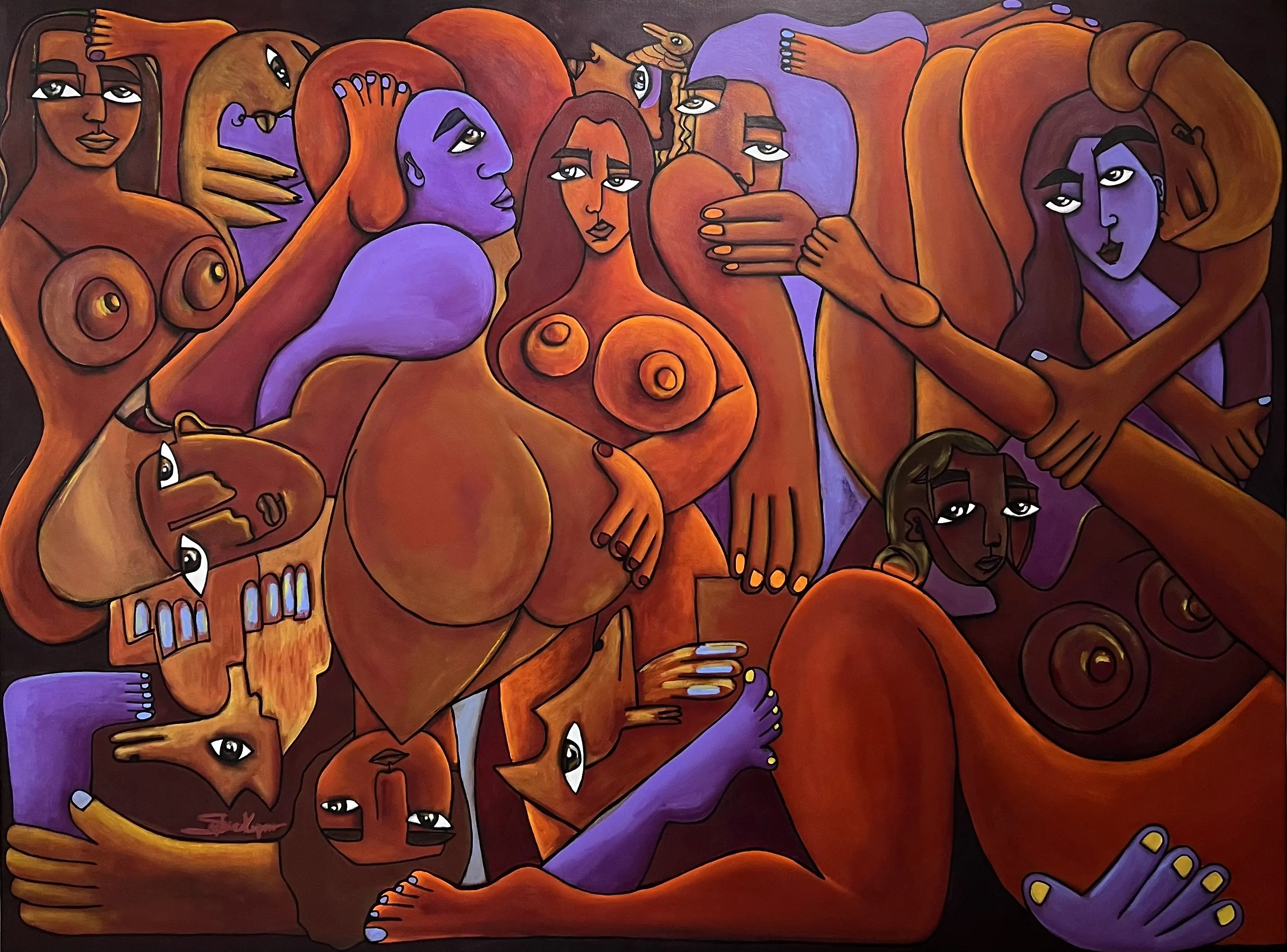
Rebirth
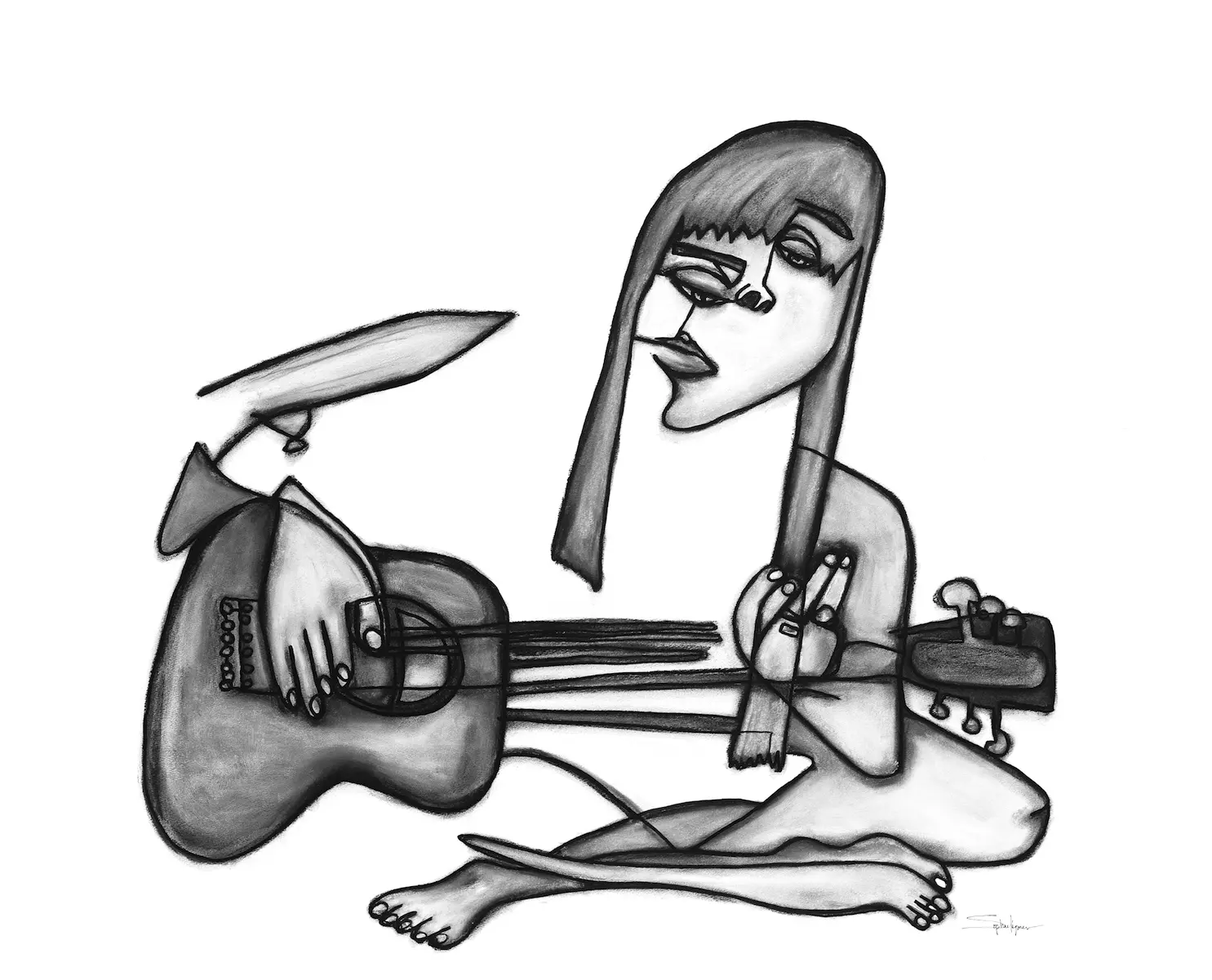
Joni Mitchell
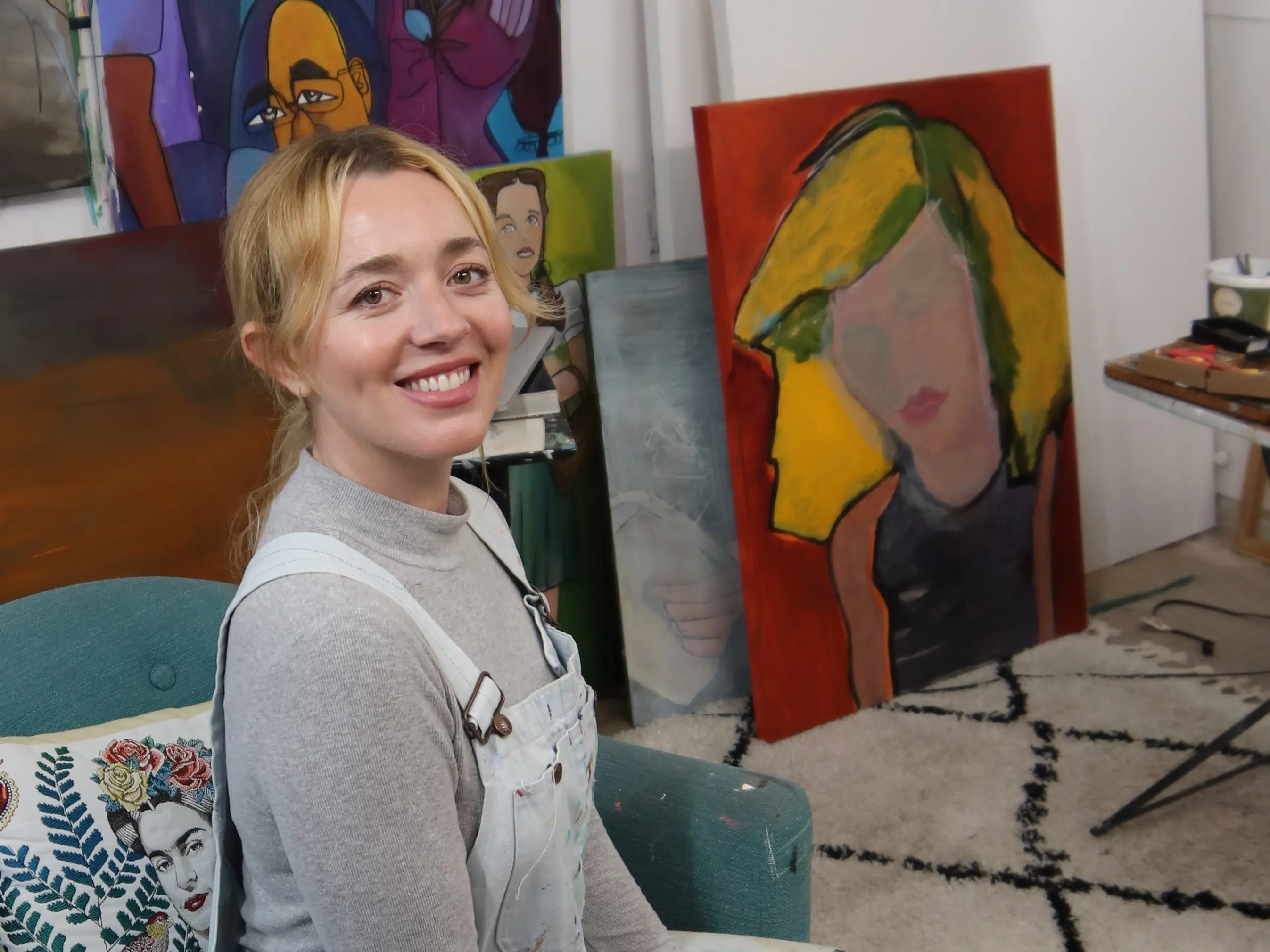
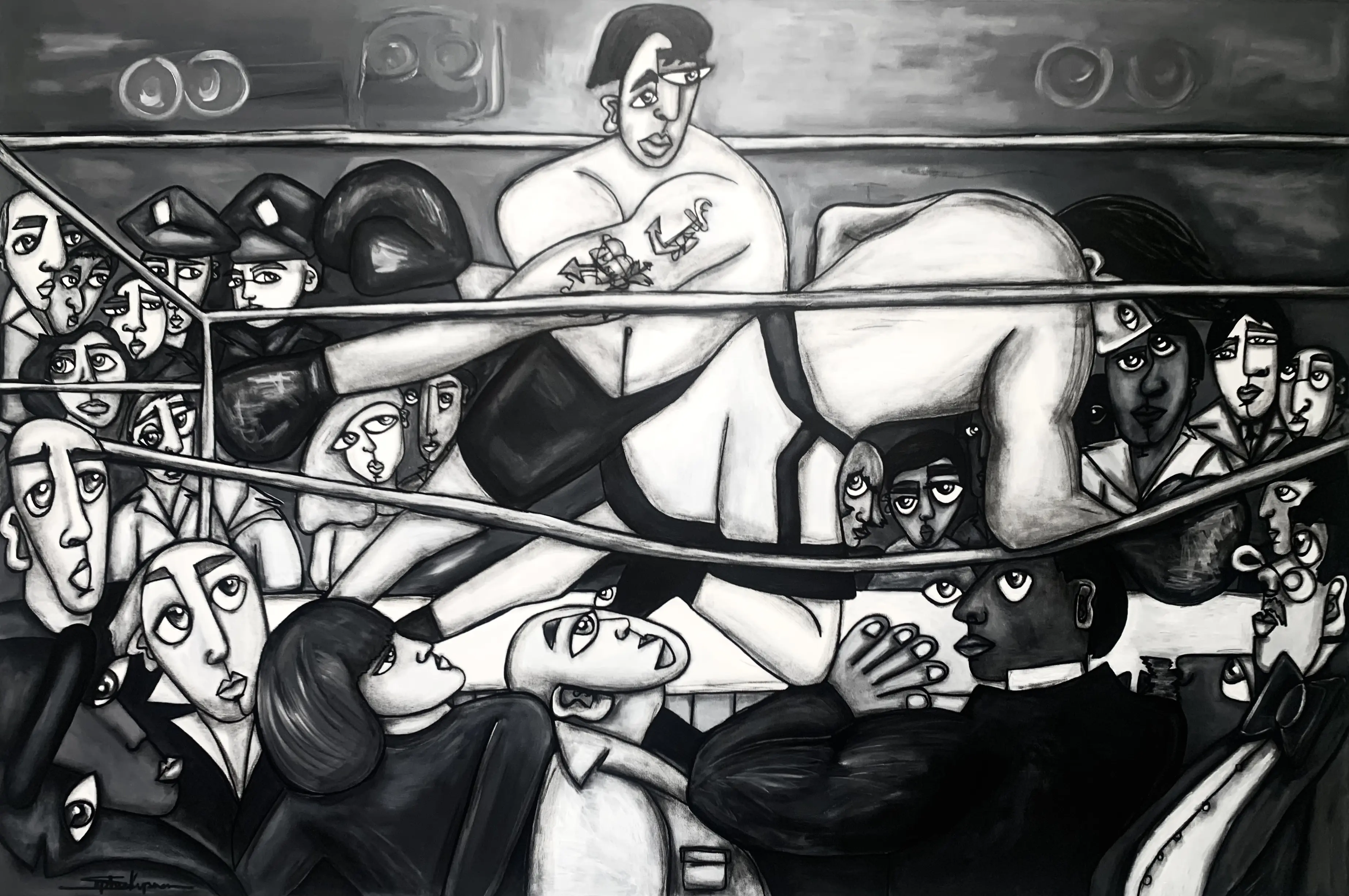
At The Fight
So where does Sophie Kipner go from here? How does she stay ahead of that shadowy self of the mind? In keeping with her unique twist on voyeurism, Sophie contemplates the idea of returning to challenging times in her life and painting herself into those worlds in a different way, weaving in her love for iconic figures to reconcile her own dreams. Kipner doesn’t subscribe to the old adage that one must hit rock bottom in order to create. Instead, she believes by facing difficult moments in time and moving through whatever frustrations arise, she can better comprehend her own existence. Not intimidated by facing her demons, Sophie welcomes the opportunity to expand both her humanness and her art. This comes as no surprise given her ability to convey great depth and humanity in her subjects — despite the disparate nature of their form. As she states hopefully, “I think that frustration has the capacity to create a pinball effect, and ricochet you onto a better path.”
Much like the title of her completed novel The Optimist, Sophie maintains a much-needed, refreshing and positive perspective that beautifully informs her work. Wherever her creative journey continues, it seems any confines brought on by the external or internal voyeurs she encounters will invite a sense of freedom and joyful exuberance, reminiscent of her and her work. -